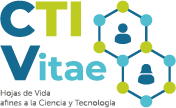ABSTRACT
Background: SARS-Cov-2 infection rates are high among residents of long-term care (LTC) homes. We used machine learning to identify resident and community characteristics predictive of SARS-Cov-2 infection. Methods: We linked 26 population-based health and administrative databases to identify the population of all LTC residents tested for SARS-Cov-2 infection in Ontario, Canada. Using ensemble-based algorithms, we examined 484 factors, including individual-level demographics, healthcare use, comorbidities, functional status, and laboratory results; and community-level characteristics to identify factors predictive of infection. Analyses were performed separately for January to April (early wave 1) and May to August (late wave 1). Findings: Among 80,784 LTC residents, 64,757 (80.2%) were tested for SARS-Cov-2 (median age 86 (78–91) years, 30.6% male), of whom 10.2% of 33,519 and 5.2% of 31,238 tested positive in early and late wave 1, respectively. In the late phase (when restriction of visitors, closure of communal spaces, and universal masking in LTC were routine), regional-level characteristics comprised 33 of the top 50 factors associated with testing positive, while laboratory values and comorbidities were also predictive. The c-index of the final model was 0.934, and sensitivity was 0.887. In the highest versus lowest risk quartiles, the odds ratio for infection was 114.3 (95% CI 38.6–557.3). LTC-related geographic variations existed in the distribution of observed infection rates and the proportion of residents at highest risk. Interpretation: Machine learning informed evaluation of predicted and observed risks of SARS-CoV-2 infection at the resident and LTC levels, and may inform initiatives to improve care quality in this setting.
Fuente: The Lancet Regional Health – Americas







